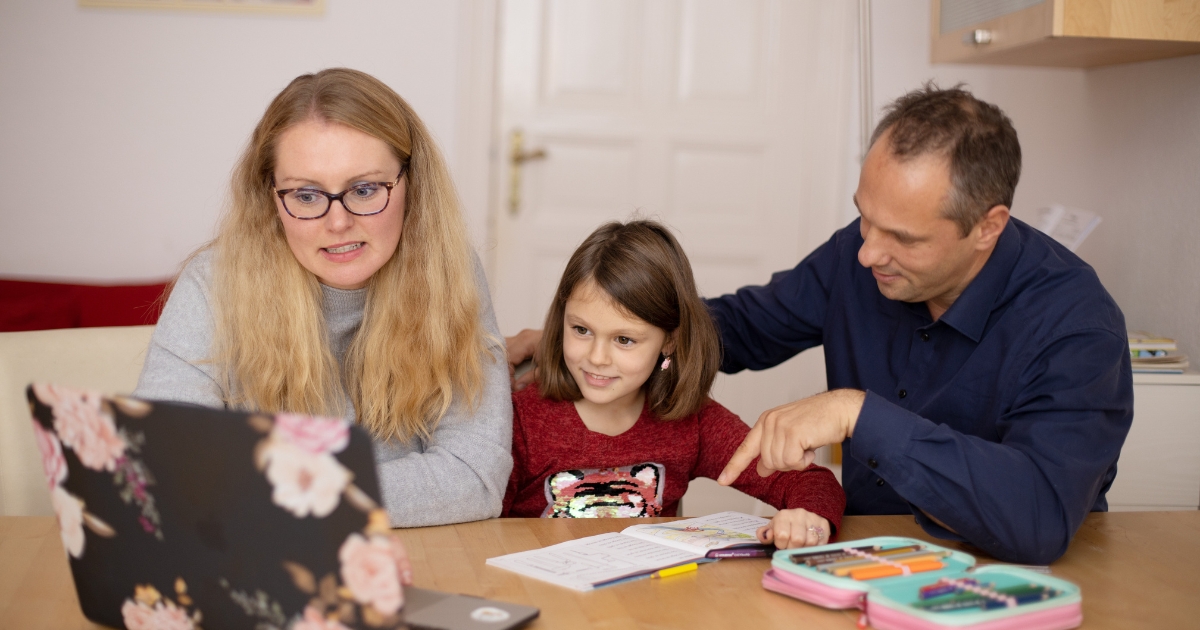Deciding to homeschool your child is a big step. It’s exciting, but it can also feel overwhelming. Many new homeschooling parents wonder, “How do new parents start homeschooling with confidence?” The good news is that with some planning, practical strategies, and the right mindset, you can feel prepared to take on this rewarding challenge.
Here’s a guide to help you get started.
Know Your “Why” and Learn the Basics
Before jumping in, take time to reflect on why you’ve chosen to homeschool. Understanding your motivations will shape your approach and keep you grounded during challenges.
- Identify your goals: Are you homeschooling for flexibility, to meet your child’s unique learning needs, or to focus on specific values or interests? Your “why” will help guide your decisions.
- Research your state’s homeschooling laws: Every state has different requirements for homeschooling, such as reporting, record-keeping, or mandatory tests. Visit your state’s education website to make sure you comply with the rules.
- Join homeschooling communities: Local and online homeschool groups can provide resources, advice, and emotional support. These communities also offer opportunities for group activities, field trips, and peer interaction for your child.
Knowing your reasons and staying informed about legal requirements will help lay a strong foundation.
Set Up a Flexible Learning Environment
One of the most appealing aspects of homeschooling is the ability to create a space that truly supports your child’s needs. Instead of replicating a traditional classroom, design an environment that encourages curiosity and creativity.
- Create a dedicated learning space: This could be a room, a desk, or even a portion of your dining table. Keep it well-stocked with supplies like books, notebooks, pens, and craft materials.
- Be adaptable: Some children thrive in a structured setup, while others might prefer learning on the couch or outdoors. Observe what works best for your child and adjust accordingly.
- Integrate learning into daily life: Cooking can become a lesson in math (measuring ingredients), and gardening can teach science (photosynthesis and ecosystems). Everyday moments are full of teachable opportunities.
Your environment should inspire learning but remain flexible. The goal is to create a setup that meets your child’s unique learning style.
Develop a Manageable Routine
A consistent routine gives structure to your day and helps everyone know what to expect.
- Start with a basic schedule: Block out time for core subjects like reading, math, and science. Decide when to focus on creative or physical activities. For instance, you might do academics in the morning and reserve afternoons for art, projects, or outdoor play.
- Prioritize flexibility: Life happens, and homeschooling allows you to adjust. Don’t stress over every detail; some of the best learning comes from spontaneous opportunities or interests sparked by your child.
- Plan breaks and downtime: Kids (and parents) need time to recharge. Build in snack breaks, movement activities, or quiet time to help everyone stay focused and refreshed.
A flexible routine strikes a balance between structure and freedom, setting you and your child up for success.

Choose the Right Curriculum
Choosing a curriculum can feel daunting with so many options available. The key is finding an approach that matches your child’s needs and your teaching goals.
- Align with your family values: Look for a curriculum that reflects what’s important to you, whether it’s creative freedom, academic rigor, or faith-based learning.
- Research different styles: Programs range from comprehensive, all-in-one packages to mix-and-match resources. While some families prefer a structured approach, others thrive with more customization.
- Examples include Montessori principles, project-based learning, or classical education. Explore trial options if available.
- Stay open to change: What works now might not work later as your child’s interests and needs evolve. It’s okay to pivot if the curriculum isn’t a good fit.
Remember, there isn’t a one-size-fits-all solution. Experiment and adjust until you find what feels right for your family.
Focus on Both Academics and Enrichment
A well-rounded education goes beyond textbooks. Encourage your child to explore hobbies, develop social skills, and discover their passions.
- Encourage extracurricular activities: Kids learn valuable skills through music, sports, theater, or community service. Find local organizations or classes to explore new interests.
- Use hands-on learning opportunities: Science experiments, writing a storybook, or building a simple structure with Legos can make subjects exciting.
- Plan for social interactions: Homeschooling doesn’t mean isolation. Join co-ops, organize playdates, or participate in group sports to help your child interact with peers.
Balancing academics with creative and social pursuits will foster a lifelong love of learning and help your child grow into a well-rounded individual.
Build a Support Network
No one should homeschool alone. Connecting with other families can make the process smoother and more enjoyable for you and your child.
- Join local homeschool groups: Many communities have meet-ups, co-ops, or field trips for homeschoolers.
- Participate in online forums: Virtual communities are a great way to share ideas, ask questions, and find emotional support.
- Attend homeschool workshops and conventions: These events often feature expert speakers, curriculum vendors, and resources to enhance your homeschooling experience.
- Exchange resources: Swapping books, worksheets, or lesson plans with others can save money and introduce fresh ideas.
A strong support network gives you guidance, reassurance, and a sense of camaraderie as you tackle the challenges of homeschooling.
Foster Independence and Confidence
Homeschooling is an opportunity to help your child grow as a confident, independent learner.
- Give responsibility gradually: Start by having your child manage small tasks, like organizing their materials or deciding which subject to study first. Over time, introduce more independence.
- Encourage goal setting: Work together to set daily or weekly objectives. Celebrate achievements to build your child’s motivation.
- Teach problem-solving skills: Encourage your child to ask questions, explore solutions, and work through challenges on their own before seeking your help.
- Instill a growth mindset: Remind your child that mistakes are part of learning. Praise effort, curiosity, and creativity rather than just results.
By encouraging independence, you’re equipping your child with skills that go beyond academics.
Regularly Evaluate and Adapt
Homeschooling is a dynamic process that should evolve as you and your child find what works best.
- Assess progress regularly: This doesn’t always mean tests. You can evaluate your child’s understanding of a topic through discussions, projects, or real-life applications.
- Reflect on your approach: Ask yourself what’s working and what feels challenging. Adjust your teaching methods or routine as needed.
- Celebrate successes: Take time to acknowledge the progress you’ve made. Small wins, like mastering a new skill, are worth celebrating.
Homeschooling is not static—it’s a continuous learning experience for both you and your child.
Cultivate a Positive Mindset
Attitude matters as much as planning and preparation. Approach each day with flexibility, patience, and a willingness to learn alongside your child.
- Expect challenges: Stumbling blocks are a normal part of the process. Remind yourself that no homeschooling day is perfect, and it’s okay to take breaks when needed.
- Focus on joy and connection: The beauty of homeschooling lies in the extra time you get to bond with your child. Cherish this opportunity to learn and grow together.
- Stay curious: Be open to trying new ideas or exploring topics outside your comfort zone. This mindset encourages creativity and discovery for both you and your child.
Homeschooling is a lifestyle, not just a method of education. A positive outlook will keep stress in check and make the experience fulfilling for your entire family.
Homeschooling can feel overwhelming at first, but with thoughtful planning, practical strategies, and support, you’ll gain confidence. Trust yourself, remain flexible, and enjoy this opportunity to shape a meaningful and personalized learning experience for your child.





